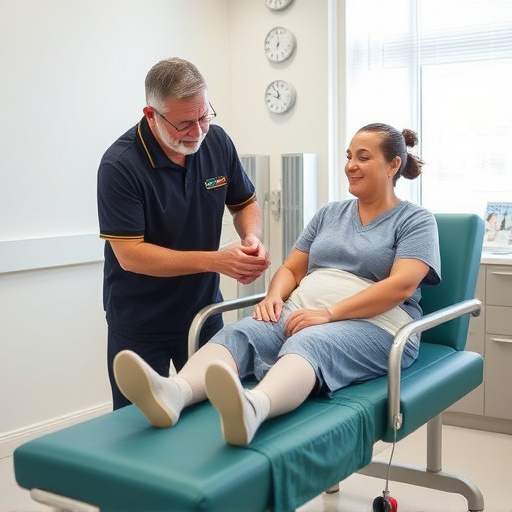Understanding medical jargon in workers compensation doctor reports is key to navigating claims effectively. Terms like 'functional capacity', 'prognosis', and 'non-invasive treatment' provide insights into worker capabilities, recovery, and suitable therapies. Knowing these definitions empowers individuals to actively participate in treatment plan discussions and make informed return-to-work decisions. Familiarize yourself with local workers compensation laws and guidelines to protect your rights, ensure proper medical care, and advocate for fair assessments. After receiving a report, both employees and employers must promptly communicate findings, collaborate with insurance providers, and coordinate with healthcare professionals for optimal recovery and return to work.
Understanding work status reports from compensation doctors is crucial for navigating workers’ compensation claims effectively. This comprehensive guide decodes key terms, explores legal implications, and provides actionable steps for navigating claims efficiently. By familiarizing yourself with these reports, you can better advocate for your rights and expedite the process. From decoding complex medical jargon to knowing your legal standing, this article equips you with essential knowledge about workers compensation doctors’ reports.
- Decoding Reports: Key Terms and Definitions
- Legal Implications: Understanding Your Rights
- Navigating Claims: Next Steps After Receiving a Report
Decoding Reports: Key Terms and Definitions

Understanding the jargon used in work status reports from compensation doctors is essential for anyone navigating the workers’ compensation process. These reports play a crucial role in communicating an injured worker’s progress and treatment plan, and deciphering them accurately can be key to receiving adequate support and benefits.
Key terms often include ‘functional capacity’, which refers to what an individual can do physically despite their injury. ‘Prognosis’ provides an estimate of the expected outcome and recovery time, while ‘non-invasive treatment’ describes therapies that avoid surgical intervention, such as physical therapy or medication for headache relief. Terms like ‘muscle recovery’ indicate specific areas of focus for rehabilitation. Familiarizing yourself with these definitions ensures you can actively engage in discussions about your treatment and make informed decisions regarding your return to work.
Legal Implications: Understanding Your Rights

When reviewing a work status report from a workers compensation doctor, it’s crucial to be aware of the legal implications. These reports play a significant role in determining your benefits and the course of your recovery. Understanding your rights is essential; workers compensation laws vary by region, but they are designed to protect employees who sustain injuries or develop illnesses related to their jobs. Knowing these rights can help ensure you receive proper medical care, including access to chiropractic care for joint pain relief or pinched nerve symptoms.
The reports from compensation doctors often influence decisions regarding temporary or permanent disability, and the level of benefits you’re entitled to. As an employee, you have the right to a fair and accurate assessment of your condition. This includes the timely provision of medical services and treatment plans that align with best practices for managing work-related injuries, such as those offering pinched nerve relief. Familiarize yourself with your region’s workers compensation guidelines and legal protections to effectively navigate this process and advocate for your well-being.
Navigating Claims: Next Steps After Receiving a Report

After receiving a report from a workers compensation doctor, the next steps are crucial for both employees and employers alike. The first action is to thoroughly review the document, paying close attention to any recommendations or diagnoses related to work-related injuries or conditions. This may include suggestions for further medical treatment, such as physical therapy or spinal adjustments, aimed at mobility improvement.
Next, it’s important to promptly communicate with the employee to discuss the report and any necessary follow-up actions. Employers should collaborate with their insurance providers to ensure compliance with legal requirements and to initiate appropriate claims processing. This might involve coordinating with healthcare professionals, including workers compensation doctors, physiotherapists, and other specialists to optimize recovery and return-to-work plans.
Understanding work status reports from workers compensation doctors is essential for navigating claims effectively. By decoding key terms, being aware of legal implications, and knowing the next steps after receiving a report, you can ensure a smoother process. Remember that your rights are protected under these regulations, and a thorough grasp of these procedures will empower you to take informed actions.














